A sample from MarshalN, I wrote the original notes for this tea around a month or so ago, when the tasting took place, but have since come back to this tea with different brewing parameters. In fact, this tea was a turning point in my brewing of young shengpu. I'm sure that this is elementary for most readers, but it wasn't immediately obvious to me at the time, so I'll briefly recount it here.
Prior to this event, I tended to be fairly conservative with leaf quantities of young shengpu, assuming that this would keep the bitterness (kuwei) in the young shengpu down to a palatable level. It seemed intuitive that reducing bitterness implied using fewer leaves, or more water. I tried both. However, I found that I wasn't picking up on a lot of the complexities in the tea.
Following MarshalN's advice, I took the counterintuitive step of using lots of leaves (~7-8g instead of ~5g), but brewing exceptionally quickly. Pour the water into the pot, put the kettle down, pour the water out - total elapsed time ku under control, but had the very pleasant side effect of conveying the full complexity of flavour right from the outset. It also had the very unexpected outcome of also conveying the texture of the tea (light oiliness, perhaps, or thick tippy body), which I had assumed would be obscured by the brevity of the infusion. As I say, I'm sure this is elementary for most, but it took me a surprisingly long time to overcome my instincts about using lots of leaf. My 12cl young shengpu pots are now pretty much filled with tea at the end of a session, and the result is a more informative experience of the leaf's particular qualities.
Harrogate mains water @ 100C in 9cl gaiwan; ~7-8g leaf; 1 rinse
Harrogate mains water @ 100C in 9cl gaiwan; ~7-8g leaf; 1 rinse
A good grade with plenty of white tips, a sheen over all. An aroma! Sweet and dark. Not unlike my beloved 1998 Menghai "Peacock" tuocha.
3s, 5s, 6s, 12s,:
No smoke, very little aroma - contrasting with my original brewing method (fewer leaves, 15s infusion) which resulted in excessive smokiness. Amusingly, both Davelcorp and I noticed "male urine" in the aroma using the original brewing parameters, which is entirely absent with the newer infusion method.
The kuwei is no longer overpowering, but forms a pleasant end in the throat. The body is fairly thin, though there is a pleasant mushroom set of tastes, again similar to the 1998 Menghai Peacock. The texture is smooth and decent, with good oil on the lips. The overall effect is very calming - it left me soporific for an afternoon of listening to speeches and lectures.
In later infusions, the wenxiangbei suddenly develops to give a fine, sweet aroma. There is fair patience in the mouth. It is worth noting that the soup is murky.
Wet leaves:
Mostly small; some whole, but the majority are broken. Very healthy leaves: supple, healthy, and green. They are quite dirty: black specks and tar-like residuals may be seen [pictured].
Overall:
A transformation from a grotty, unpleasant affair into something smooth and enjoyable. While fairly "high" in flavours and aroma, there is a decent range of basis flavours to make it a worthwhile cake.
Though the chance of ever encountering this tea again is almost nil, the experience gleaned from changing my brewing methods of young shengpu is of much greater significance.
Addendum
April, 2010
MarshalN recently sent me another sample of this cake (thanks again!), but it was a "blinded" tasting session.
The leaves (pictured above) appeared to have some age, as they had something of a dusty red about them. Absent any scent, it is a heterogeneous blend of mid-sized leaves, slightly broken, with some stems.
Recently, I've been catching up on trying various 2009 pu'er, and so this sample, with some age about it, was a very welcome change.
The colour of the soup had a very pleasant deep-orange centre, with a chunky, heavy scent in the aroma cup.
After an infusion or two of some reticence, it awoke to become sweet and woody, with a nicely full body. In the nose, from the first infusion, were hints of maltiness that reminded me of the wok - turning out the leaves at the end (shown below), it appears that around 10% of the blend in my sample comprised red, heavily-wok'd leaves. This was just a minor component, with respect to the general sweet woodiness, but present from the start nonetheless.
On learning that this was the "male urine" cake, I was delighted to see that it had aged so well. Mr. N is clearly doing something right in his storage.
I recall that same Mr. N terming cakes in this 5-10 year band as being "drain cleaners", falling neither into youth nor maturity. However, without meaning to be contrary, I find them to be some of my favourites for exactly that reason: they have had the brusqueness of youth eroded and mellowed to some degree, with woody notes present, and yet they still retain some of the vigour and challenge of their earlier days.
A thoroughly enjoyable trip down memory lane.
P.s. this tea is pronounced "ch'uan-gee", not "kwan-gee"!
P.s. this tea is pronounced "ch'uan-gee", not "kwan-gee"!
Addendum
September, 2010
Dear reader, allow me to regale you with tales of further Taobao adventures. His Grace, the Duke of N was kind enough to point me in the direction of a Taobao source for the esteemed, nay almost mythical, "male urine" cake of bygone posts: the 2003 Quanji.
So that's what you look like
A little over three years ago (for which I refer you to the start of this page, above), I wrote that "the chance of ever encountering this tea again is almost nil". As fate would have it, I've since enjoyed it again, courtesy of anonymous samples from His Grace, and now, with a cake of mine own.
I've also observed an interesting characteristic in myself: I tend to appreciate cakes more when I own them.
Tight
This doesn't always work - there are more than a few cakes that I own that I can't really claim to enjoy to any great degree - but it holds true most of the time. There is something about handing over one's hard-earned sheckles that softens the mind, tints the lenses, and sweetens my opinions.
I am glad to read from studies in everything from experimental psychology to wine-tasting that one's a priori disposition actually changes perception. You think you're going to enjoy something, and you consequently perceive it as enjoyable. I try to keep an open mind... but, hey, I'm just human*.
*Or so I'm told.
Do you come here often?
So, I now get to fawn over my very own cake of this perennial charmer. I've not actually seen its full, naked self before, which is rather a treat. The leaves are small, in the manner of the old school, and the aroma is of gentle, dark tobacco. The leaves are already rather dark, too.
I was rather taken aback by the mighty compression - the samples that I have previously received have already been separated, and rather well, it seems, for the cake itself is very tight. It's not Xiaguan tiebing, nor 12 Gentlemen, tight, but it's tricky nonetheless. I christened my "tea pick" with this session - a long spike of metal kindly provided by either Keng or my last Taobao purchase.
I am pleased to report that this cake remains very nice indeed. It's not premier-league stuff, as you will anticipate for a cake that costs a mere 188 RMB ($27), but it is worth the money. I became a little nonplussed with this tea at one time, but have since found that it reacts rather well to using lots of leaves.
It is spicy, spicy wood - sweet like old varnish. It lasts well, and manages very well for a tea of its age and price. I bought this from 一团和气 - the Yituanheqi Teashop (which roughly means "to keep in favour with everyone"). It's worth a flutter, if you're already buying elsewhere on Taobao. I don't think that I'll buy more than my one tester cake, but it is a pleasure to own it - if only for old times' sake. I'm a sentimental fool.


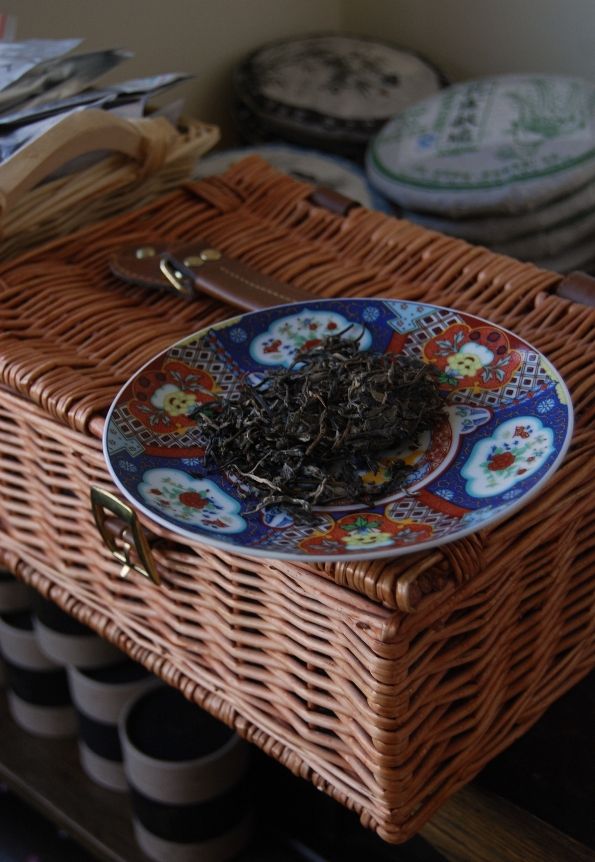
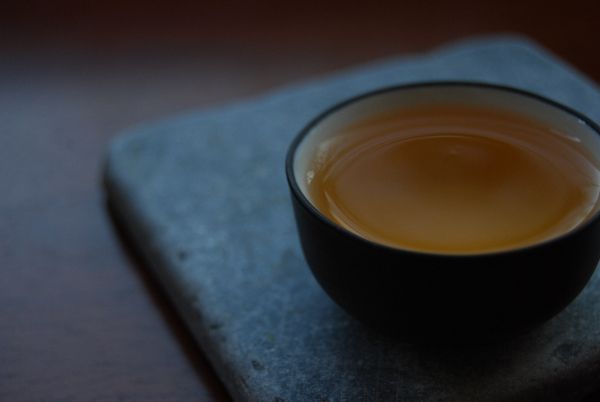
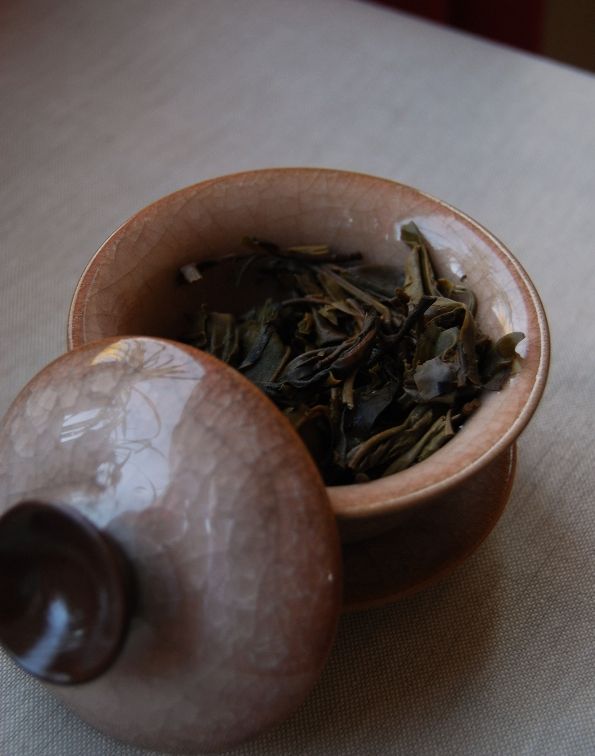
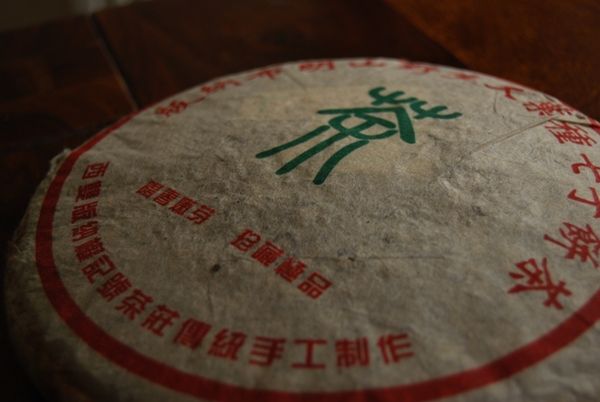

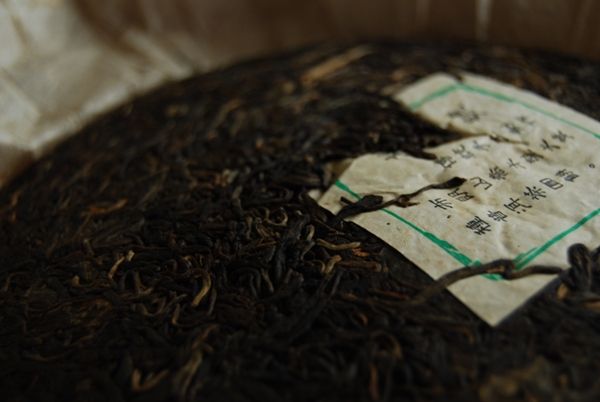
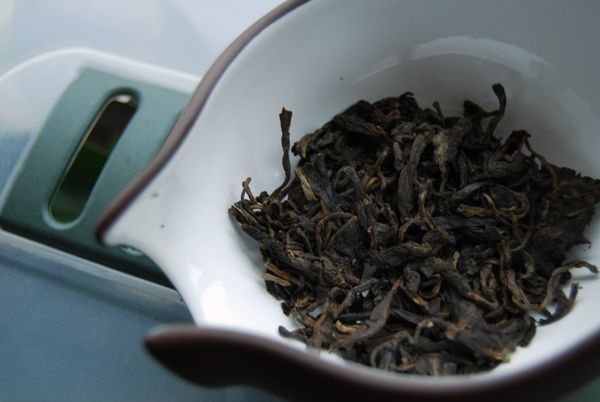
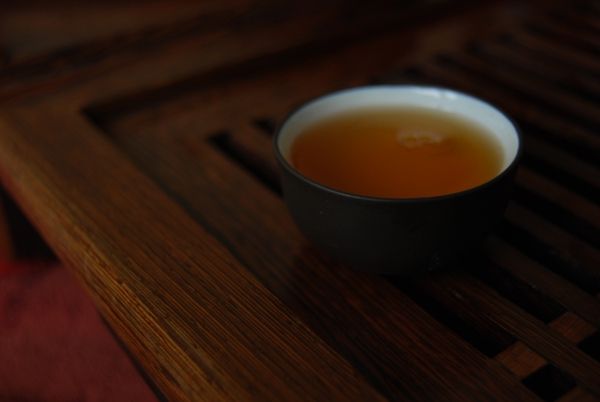
3 comments:
Since you give steeping time such emphasis here, I am wondering how you are timing it, since it usually takes more than "5s" to pour the water in and to pour it out. Is it the "resting time" between pouring in and out of the pot? Wow, 8g of tea is a lot for one go! :)
I have been pretty lucky in my method of brewing Puerh's. I can usually (usually) take a look at the tea, then decide quickly how much to measure out in the yixing pot, or gaiwan, based on intuitive "feeling" of how much leaves will produce good brews. For some reason, I have almost never weighed any amount of tea in my pots (unless it is an expensive, old sample), but definitely use the same "quick-brew" technique, and often times get great results. It's fun to experiment, isn't it?
As usual, great blog!!!
- CB
Dear CB,
I do the same, these days. Sometimes, a particularly brutal young shengpu can take me by surprise, though, and I have to revise my quantity down! Conversely, some older teas can be unexpectedly weak, and benefit from the later addition of more leaves. I find that the aroma seems to help (loosely) with determining the potency of young shengpu.
Toodlepip,
Hobbes
Post a Comment